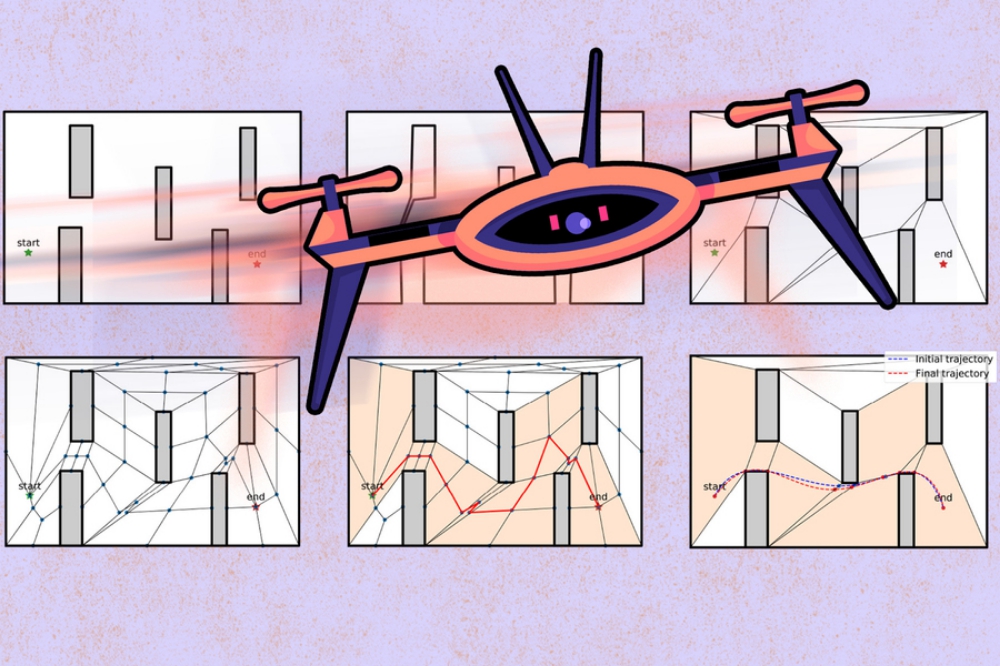Aerospace engineers at MIT have devised an algorithm that helps drones find the fastest route around obstacles without crashing. The new algorithm combines simulations of a drone flying through a virtual obstacle course with data from experiments of a real drone flying through the same course in a physical space.
The researchers found that a drone trained with their algorithm flew through a simple obstacle course up to 20 percent faster than a drone trained on conventional planning algorithms. Interestingly, the new algorithm didn’t always keep a drone ahead of its competitor throughout the course. In some cases, it chose to slow a drone down to handle a tricky curve, or save its energy in order to speed up and ultimately overtake its rival.
“At high speeds, there are intricate aerodynamics that are hard to simulate, so we use experiments in the real world to fill in those black holes to find, for instance, that it might be better to slow down first to be faster later,” says Ezra Tal, a graduate student in MIT’s Department of Aeronautics and Astronautics. “It’s this holistic approach we use to see how we can make a trajectory overall as fast as possible.”
“These kinds of algorithms are a very valuable step toward enabling future drones that can navigate complex environments very fast,” adds Sertac Karaman, associate professor of aeronautics and astronautics and director of the Laboratory for Information and Decision Systems at MIT. “We are really hoping to push the limits in a way that they can travel as fast as their physical limits will allow.”
Tal, Karaman, and MIT graduate student Gilhyun Ryou have published their results in the International Journal of Robotics Research.
Source: MIT

